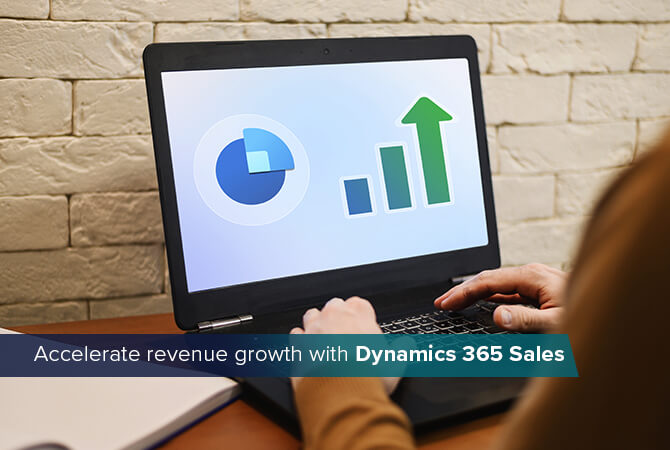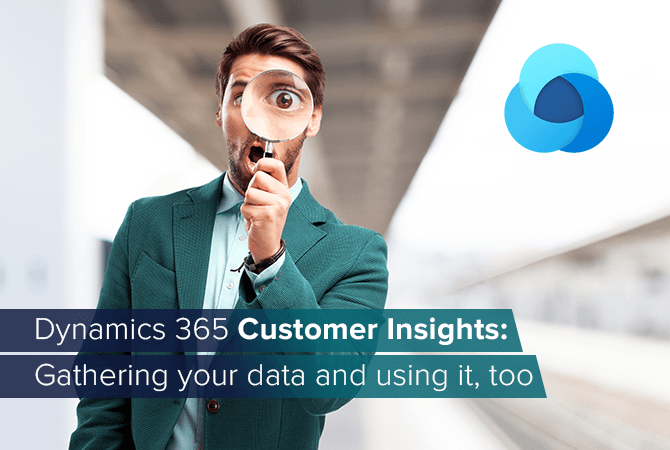
Dynamics 365 Customer Insights: Gathering your data and using it, too
The behavior of customers has changed over the last few years. For one, consumers and clients pay more attention to a company’s values. People are inclined to buy from brands they can identify with.
For another, company-customer-relationships have shifted largely from meeting in real-life to online interactions. Despite, or maybe precisely because of this shift from analogue to digital, most customers don’t want to feel like one of many; rather they expect to be approached on a personal level.
The probability of someone returning to a certain brand and sticking with it is higher when they are left with the feeling of being understood and taken care of. This works both ways, though. Meaning, just one – from the customer’s point of view – negative experience can be enough to discard the brand from their subconscious list of trusted brands. That is why providing their customers a positive experience should be a priority for all companies.
What is Dynamics 365 Customer Insights?
Microsoft’s Dynamics 365 Customer Insights is an AI-driven customer data platform hosted in Azure that helps you to gain actionable insights from your data. Using prebuilt connectors, it retrieves all data from various systems, no matter whether from other Microsoft applications or third-party data sources, for instance CSV or PDF files. Customer Insights dissolves silos and unifies all data in one single source of truth. This ensures that sales, marketing and customer service make decisions based on the same information.
3 steps towards unified customer profiles
Once all current data has been imported into Customer Insights, comprehensive profiles for every customer can be created. This requires three preparational steps: Map, match and merge. They define which information from which source should be in the profiles. Customer Insights then applies algorithms to form one record per customer.
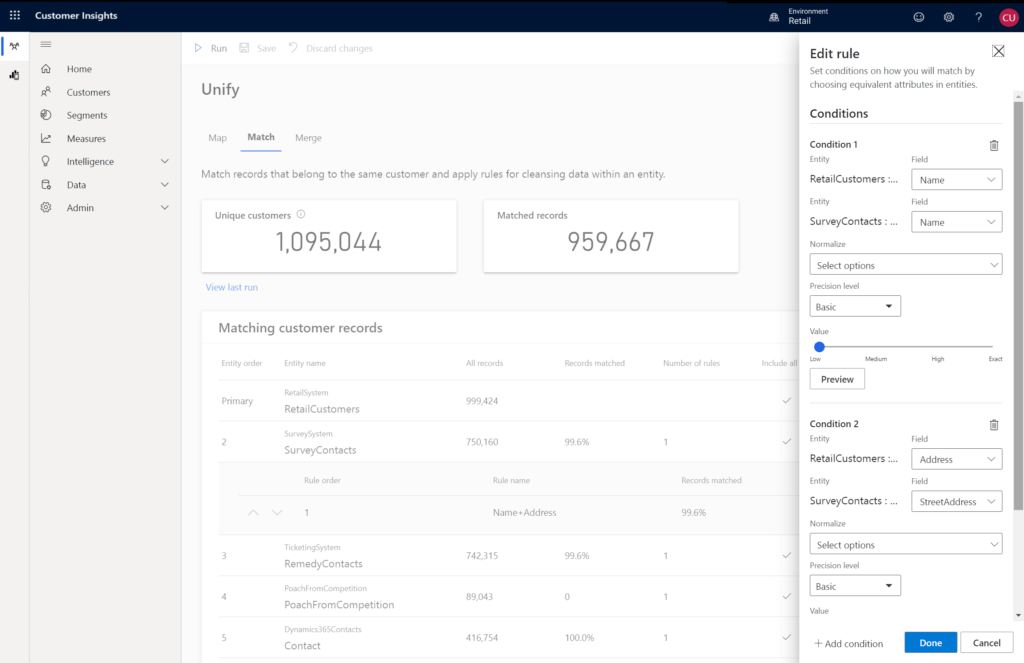
Consult docs.microsoft.com to get step by step instructions to the unification process.
2 crucial questions are answered
As the name implies, Customer Insights gives you insights into who your customers are (audience insights) and how they engage with your brand (engagement insights).
Besides general information such as the customer’s name and address, audience insights include transactional data, e. g. when the customer spent money on your products or services and how much. All other kind of information that was imported into Customer Insights can be found here, too, i. e. interests, feedback or a history of the customer’s activities and more.
The engagement insights let you know how costumers engage with your brand via the website, apps, social media channels and in-store. Which devices do they use when and what are they up to? Are they just browsing or actually buying something? Given this info, AI helps to recognize correlations. For instance, it detects at which point during the purchase funnel most potential customers drop out. Only when you know about imperfect events, can you initiate improvement measures.
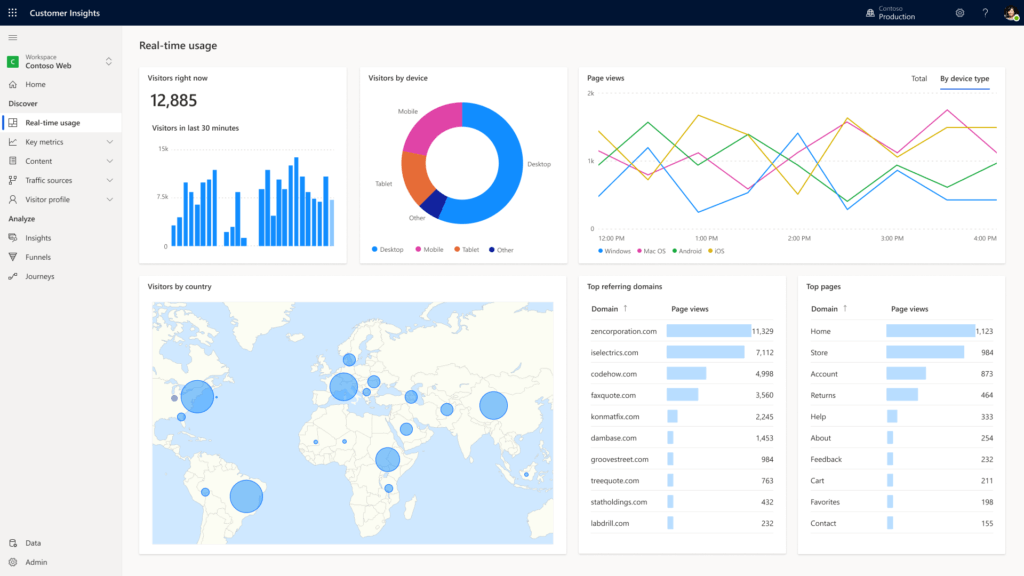
Tip: It is also possible to create profiles for organizations instead of single people.
1 convincing customer experience
Unless your company only has a handful of selected customers, you probably won’t regard single profiles. Customer Insights encourages you to group them into segments, for instance, in high-value customers, complaining customers or those interested in sports. That makes it easier to recognize patterns and draw insightful conclusions.
To interpret the data, no special data analyst is needed. The ready-to-use AI identifies patterns and trends and makes predictions, like which customers or segments are likely to churn. Furthermore, the AI suggests concrete measures, recommends products or services to focus on and even explains why.
With all these insights in mind, you can make profound decisions. Maybe change your marketing campaign or even your assortment according to detected trends. You might even come to surprising conclusions about your target group. Only if you know who buys your products or services, you can adapt your marketing and sales strategy accordingly.
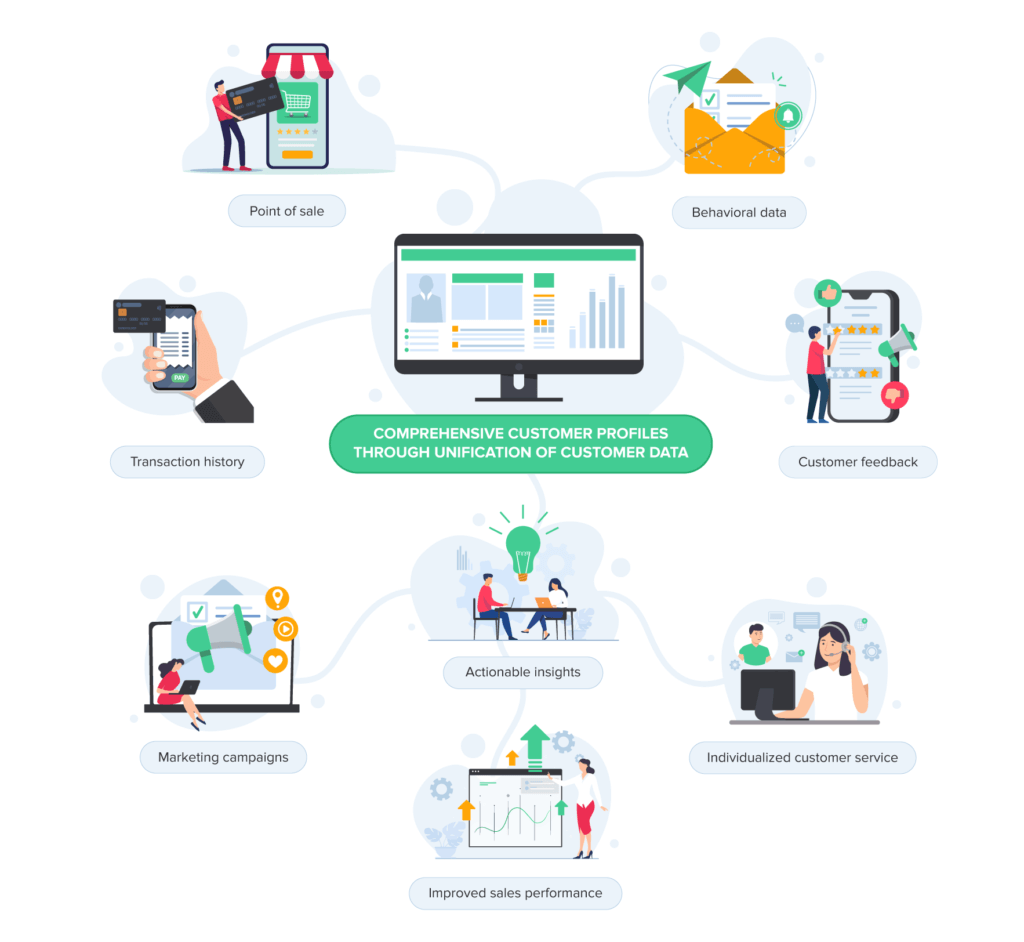
Tip: Read more about how marekting and sales can improve their collaboration.
What are the benefits?
Nowadays more than ever, it is not just hard facts and numbers that sell, but emotions and personal experiences. Customer Insights is a great tool to leverage data to provide your clientele such an experience all the way from advertising over sales to support. Dealing with all this data, data protection plays an important role, too.
Customer Insights helps you to:
- understand your audience
- anticipate their desires
- reach customer satisfaction through a personalized experience
Granting all departments access to all data opens new possibilities:
- Democratizing data
- Identification of opportunities
- Up- and cross-selling
Customer Insights supports also when it comes to data protection and compliance:
- easily follow data protection protocols with all data in one place
- high data protection standards for storage and transfer of data
How to best use Customer Insights
To draw actual value from Customer Insights, companies need a reasonable amount of data. Depending on the business model, this data is collected within months, which means organizations that have been on the market for a while are good to go.
Furthermore, it is important to ask the right questions. Only then can you group your profiles in a useful manner and analyze them according to business relevant criteria.
Last but not least, we recommend connecting Customer Insights with your existing business applications from Microsoft or third-party providers. That way gained insights can immediately influence your daily business.
You have further questions and want to talk to an expert? No problem, just leave us a message!





